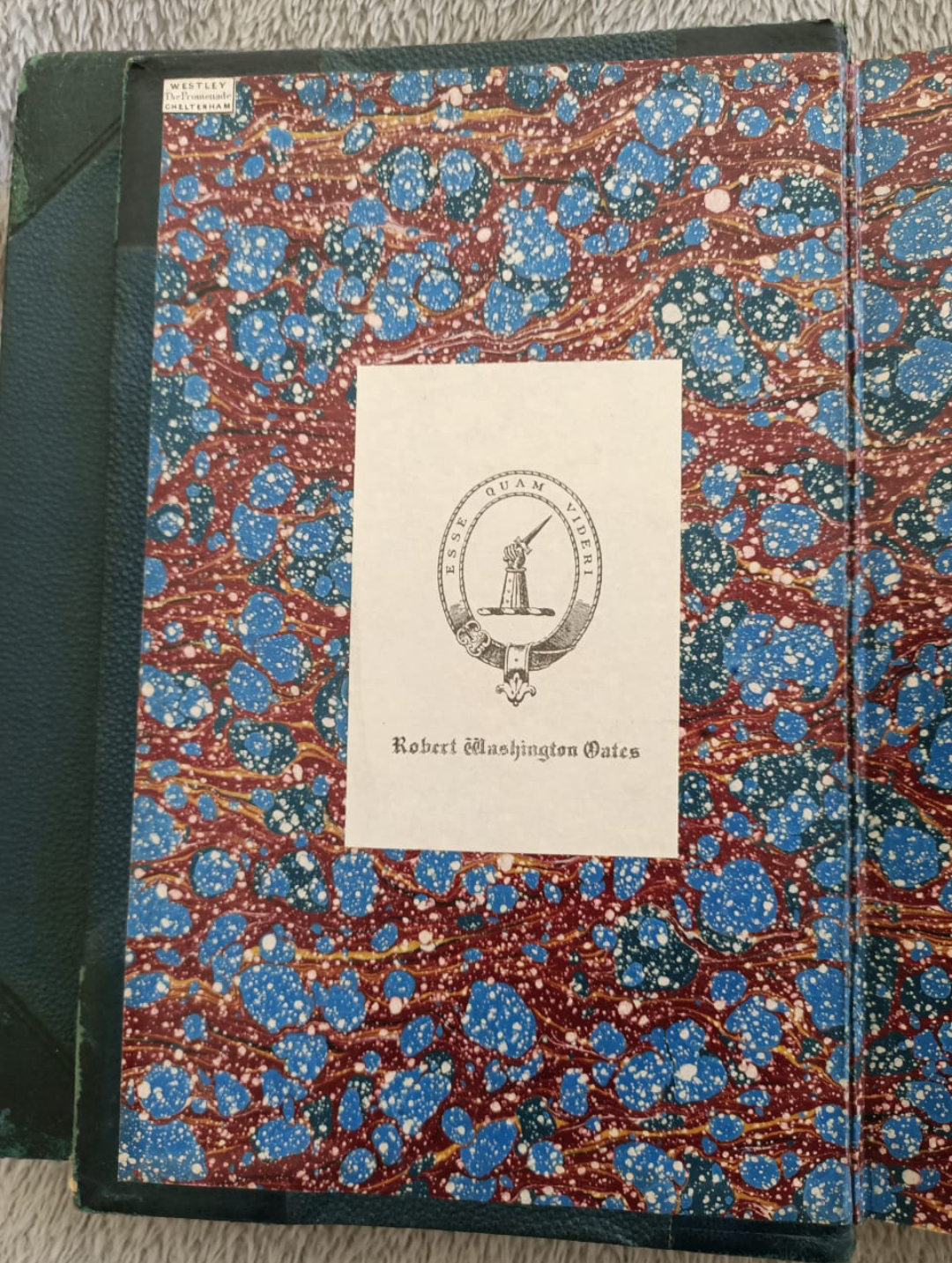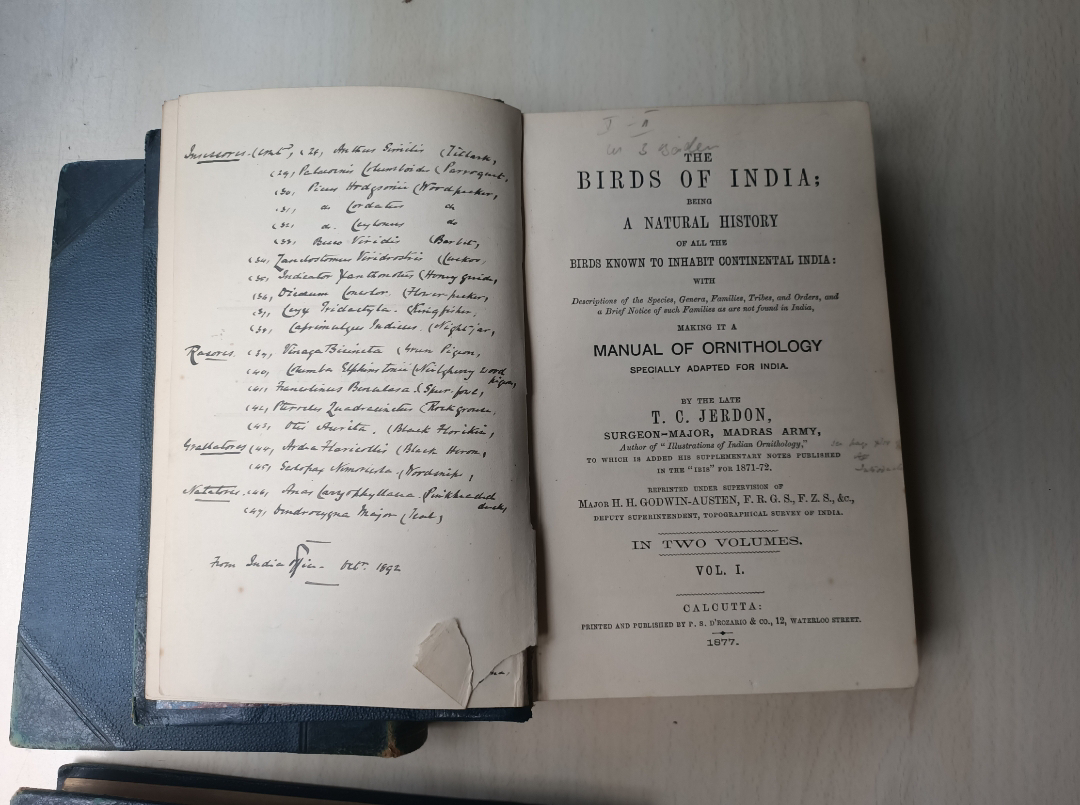"The Birds of India" by T.C. Jerdon is a seminal work in Indian ornithology, originally published in 1862-1864, with various subsequent editions. Thomas Caverhill Jerdon was a British physician and naturalist who made significant contributions to the study of Indian birds. His work remains a crucial reference for ornithologists and bird enthusiasts interested in the avifauna of the Indian subcontinent.
These books are from the collection of Robert Washington Oates, whose book plate is seen here:
(More about this amazing collection and library in my next blog)
The handwritten notes in the first few pages and several notations through out the 3 volumes, and a sketch of the "Foot of Neopus Malaiensis", belong to the notable Mr. Frank Oates, the Victorian Explorer and Ornithologist.
Overview of "The Birds of India"
Content and Structure:
- The book is divided into multiple volumes, each detailing different species of birds found across India.
- Jerdon's systematic approach includes descriptions of the birds' physical characteristics, behaviors, habitats, and vocalizations.
- The work covers a wide range of bird families, providing detailed notes on species from raptors to songbirds.
Significance:
- Jerdon's meticulous observations and classifications have laid the groundwork for modern ornithology in India.
- His descriptions often include local names of the birds, which helps in understanding regional vernacular and traditional knowledge about the species.
Notable Features:
- Illustrations: While not as richly illustrated as some other contemporary works, Jerdon’s text provides essential identification details that complement his descriptions.
- Distribution: The book maps out the geographic distribution of various species, offering insights into their range within the Indian subcontinent.
Historical Context
Ornithological Contributions:
- Jerdon’s work came at a time when the British Empire was deeply invested in cataloging and studying the natural history of its colonies.
- His contributions are often compared with those of his contemporaries like Allan Octavian Hume and Edward Blyth, who were also prominent figures in Indian ornithology.
Influence:
- Jerdon’s observations have been foundational for subsequent ornithological studies and have been referenced in many later works on Indian birds.
- His efforts helped foster a greater understanding of India's biodiversity among both the scientific community and the general public.
Accessing the Work
Modern Editions and Availability:
- "The Birds of India" has been reprinted several times, and modern editions are available through various academic and natural history publishers.
- Digital versions of the book can be found in online repositories like the Internet Archive, where readers can access the full text for free.
Further Reading and Research:
- For those interested in delving deeper, supplementary works by Jerdon include his writings on Indian mammals and reptiles, which also contribute to the broader understanding of India’s wildlife.
Additional Resources
For those looking to explore "The Birds of India" by T.C. Jerdon, the following resources might be useful:
- Internet Archive: Offers free access to digitized versions of Jerdon's works.
- Biodiversity Heritage Library: Contains various editions and related ornithological texts.
- Local Libraries and University Collections: Many have historical collections that include Jerdon’s works.
In summary, T.C. Jerdon’s "The Birds of India" is a cornerstone of Indian ornithology, offering detailed insights into the bird species of the region during the mid-19th century. His methodical approach and comprehensive coverage make it a valuable resource for both historical and contemporary studies in the field.






No comments:
Post a Comment